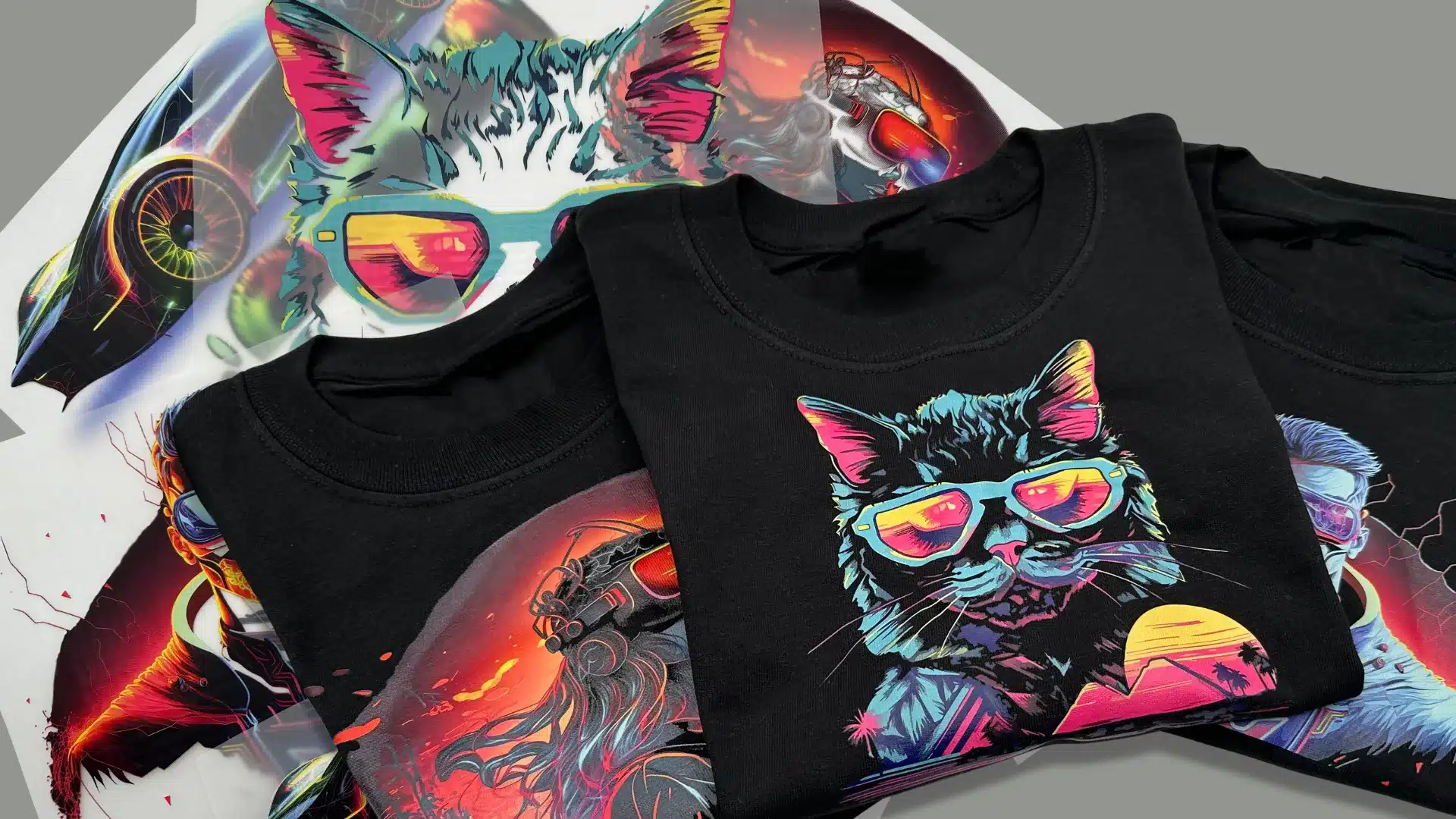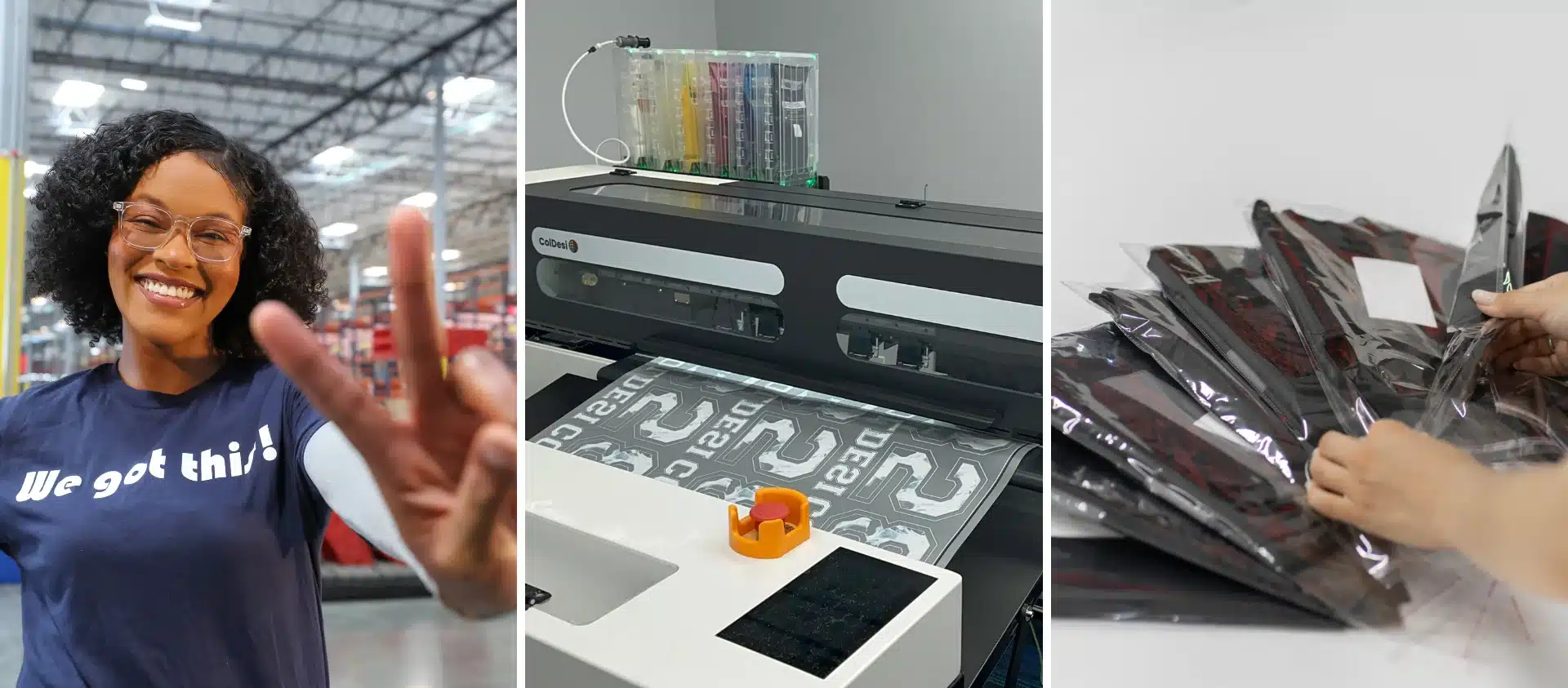Adapting to Custom Apparel Market Saturation
The increase in accessibility and demand for custom apparel has led to remarkable growth in the t-shirt printing industry. This growth has encouraged a wave of new businesses to enter the marketplace, ultimately leading to oversaturation and increased competition.
E-commerce has made it easy for entrepreneurs to enter the market without major barriers. Print-on-demand (POD) services have also played a significant role, allowing anyone to start a t-shirt business without needing upfront costs or inventory.
This low barrier to entry has democratized the custom apparel industry, opening doors for newcomers while contributing to market overcrowding, which creates challenges for existing businesses trying to survive.
For t-shirt printers, market saturation is a growing concern, further complicated by outdated customization processes designed mainly for large-scale production. This large-scale focus limits their ability to meet the demand for smaller, POD orders, often diminishing their competitiveness in today’s custom apparel marketplace.

Custom Apparel Market Saturation: How to Compete
Many businesses struggle to compete because their equipment is not optimized for POD. This causes them to miss a significant segment of the custom apparel marketplace.
Investing in technology tailored to POD unlocks revenue streams and helps businesses stay competitive.
Direct-to-Film (DTF) printing is transforming order fulfillment for t-shirt printers, offering speed, versatility, and adaptability for on-demand production. DTF supports greater design flexibility and lower order volumes, making it especially valuable for businesses currently dependent on high-volume screen-printing.
The Advantage of Speed in Customization
Custom apparel market saturation affects businesses of all sizes. Speed is critical in the competitive landscape of custom apparel. DTF produces customized transfers fast, ensuring high-volume demands are met and tight deadlines are achieved.
This technology requires minimal setup and allows for batch production of varied designs without reconfiguration, meaning businesses can produce thousands of unique transfers within a brief period -unlike traditional methods, such as screen-printing, which require extensive prep and setup.
For businesses, the fast turnaround translates into faster order completion and happier customers. Unlike DTG printing, which requires managing each item individually, DTF can be applied to garments as needed.
This provides the flexibility to print on-demand or stockpile transfers, allowing for streamlined, high-output operation without sacrificing quality.
Optimizing Heat Press Operations for Consistent Workflow
While DTF speeds up the customization process, heat application can create a bottleneck if mismanaged. Investing in a reliable press is as important as selecting a quality DTF printer. The heat press stage is essential in the customization process, helping to ensure that each print meets quality standards. With the increase in print speed, traditional heat presses may struggle to keep pace. Upgrading to a professional heat press can help operators match the output of DTF. Unlike a run-of-the-mill press, a professional press manages more transfers in less time.
A high-volume, professional-grade heat press allows operators to continuously apply transfers onto garments, reducing downtime between prints and applications. This setup is ideal for businesses that focus on volume in the face of custom apparel market saturation. A professional-grade press offers consistent heat and pressure application, essential to achieving durable, high-quality results.
Unmatched Versatility Across Materials and Applications
DTF’s versatility extends beyond cotton and polyester to include a wide range of fabrics, allowing for broader design options and the ability to serve diverse customer needs. The adhesive quality of DTF transfers provides excellent bonding across materials, enabling businesses to offer customization on fabrics that are difficult to work with. Advancements in DTF inks are boosting print durability and opacity, resulting in enhanced resilience to wash and wear.
DTF prints rival the appearance of screen-printed designs, particularly in opacity and color vibrancy. As the technology progresses, the consistency and longevity of DTF are expected to exceed those of screen-printing, a significant advantage for businesses that collaborate with customers demanding premium quality.
Preparing for Success with DTF: Key Considerations
DTF operations require careful planning to ensure that the process runs smoothly. The quality of DTF transfers can be impacted by various factors, including ink type, printer settings, and environmental conditions. DTF inks and films are often tailored to specific DTF printers, with manufacturers providing films and inks calibrated for optimal performance with specific printers. Maintaining a controlled temperature and humidity level in the print room is essential.
The initial investment in DTF is often lower than for other printing technologies. DTF setup requires less equipment and staff, and the long-term costs associated with maintenance and consumables are also lower. Businesses need the assurance of prompt help should issues arise, so choosing a supplier with a reputation for quality service and support is critical.
DTF Printing: An Essential Tool for On-Demand Apparel Fulfillment
DTF gives businesses the flexibility to produce and apply transfers in real time, allowing for rapid fulfillment of on-demand orders. Unlike vinyl transfers, which have lower color vibrancy and material compatibility, DTF prints achieve a durable, vibrant finish on almost any fabric. This versatility opens new revenue streams for growing companies.
For businesses serving a diverse customer base, DTF easily transitions between unique orders without compromising quality, ideal for companies wanting to expand beyond standard t-shirt printing.
Custom Apparel Market Saturation and the Future of DTF
As demand grows, providing personalized products faster and cost-effectively is becoming increasingly valuable. DTF offers a solution that meets current demands and scales with business growth.
The advantages of DTF are clear for business owners looking to expand. DTF printing offers faster speeds, higher quality, and more versatility than pervious technologies, allowing businesses to stand out in a crowded customization marketplace, increase capacity, improve product quality, and maximize profitability.
To learn more about ColDesi’s line of DTF printers, visit coldesi.com and Live Chat with a Pro below, or call 877.793.3278.




